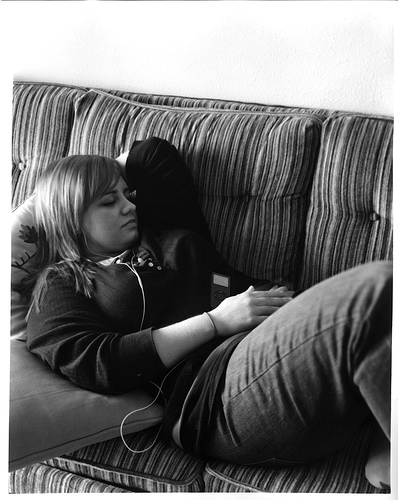
Source: Parallel rails, Rares M. Dutu, Flickr
What are parallel phrases and parallel sentences? What makes multiple sentences or phrases parallel? Well, what makes any set of things parallel?
 Look at the list below. In your notes, write down the items from the list that you think are “parallel.” Also, write down your reasons for choosing these items. When you’re finished, check your understanding to see a possible response.
Look at the list below. In your notes, write down the items from the list that you think are “parallel.” Also, write down your reasons for choosing these items. When you’re finished, check your understanding to see a possible response. - Railroad tracks
- Seaweed on a beach
- Telephone poles
- Mountains
- Trunks of pine trees
- Candy in a bowl
- Books on a shelf
- Sock balls in a drawer

Source: Parallel rails, Rares M. Dutu, Flickr
Sample Response:
These are the items from the list that we might say are “parallel”:
- Railroad tracks
- Telephone poles
- Trunks of pine trees
- Books on a shelf
The pine trees are somewhat parallel because the sun took charge and arranged them that way. It’s true that telephone poles are not always precisely parallel, but usually they are more or less parallel.
On the other hand, if you found seaweed on a beach lying in parallel lines, you would think someone had arranged it that way; seaweed does not arrange itself in parallel lines.
Pine tree trunks and books on shelves are usually parallel. Sock balls, candy in a dish, and mountains are not.
Parallel items are usually arranged to be parallel. They do not just end up that way without someone taking charge and arranging them.
When you use parallel structure in your writing, it does two things: it makes it easier for a reader to see the relationship among the things you have arranged in a parallel form, and it makes clear that you are in charge of what you are writing. You have arranged it rather than letting it arrange itself.
Parallel things occur in writing when similar ideas or conditions are listed in a series. For instance, in the following sentence, the three pleasures of music all start with the phrase “it helped her to.”

Source: 17669, HotsauceJane, Flickr
She considered music an important pleasure in her life because it helped her to relax; it helped her to concentrate; and it helped her to feel energized.
To compress this list but keep it parallel, a writer could delete most of the identical words in the second and third phrases of the series.
She considered music an important pleasure in her life because it helped her to relax, to concentrate, and to feel energized.
If you were to retain the word “to” as a part of the original repeated phrase, you would emphasize the similarity of the three ideas.
If the “to” is removed, the sentence is less emphatically parallel, but it is parallel nonetheless.
She considered music an important pleasure in her life because it helped her to relax, concentrate, and feel energized.
All three versions of the sentence use the rhetorical device of parallelism to emphasize that all three items in the series give this person pleasure in similar ways.